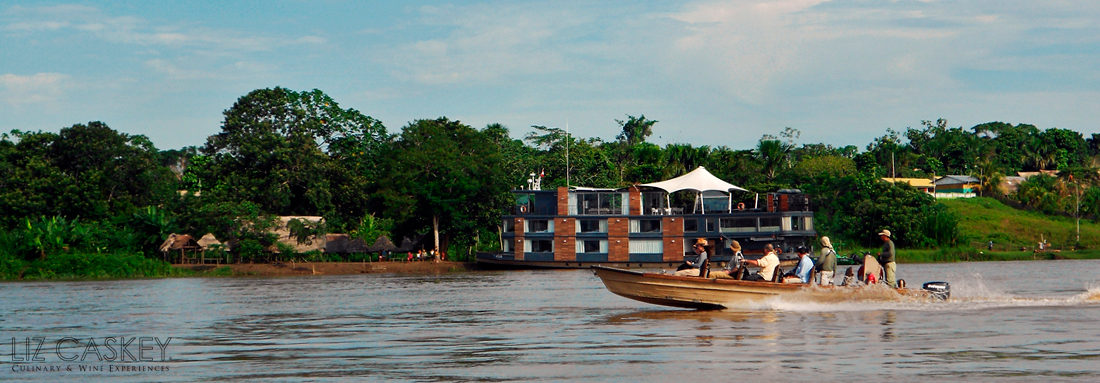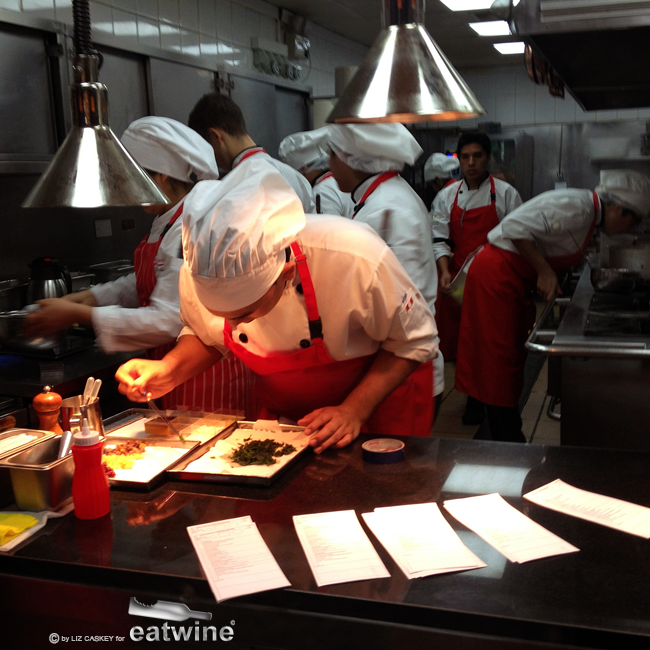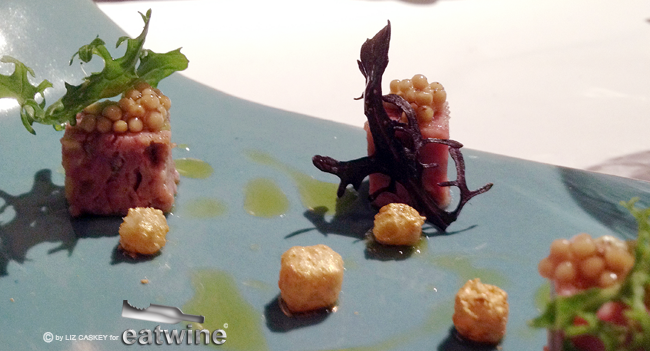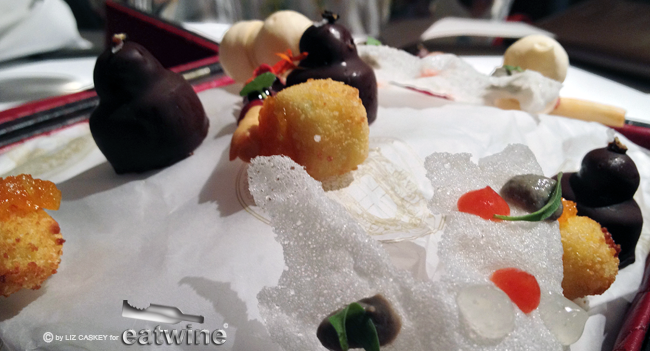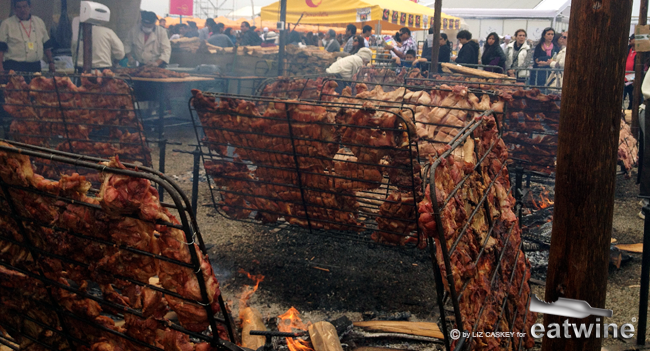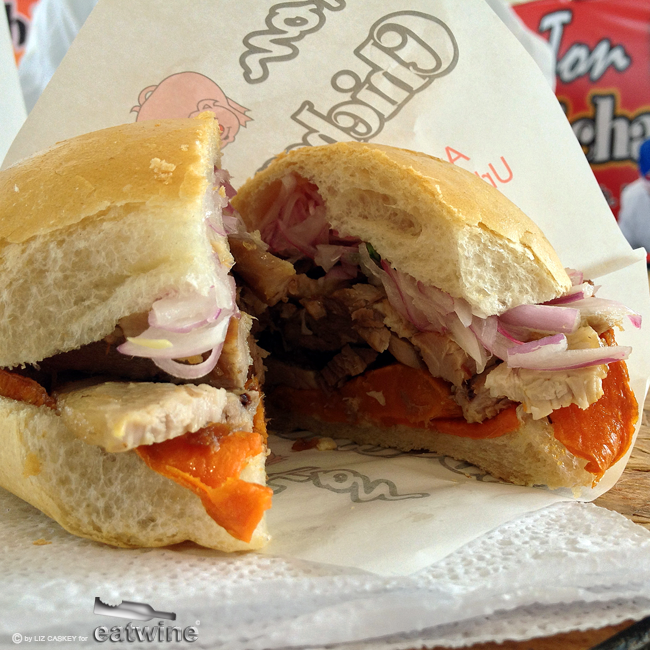Until this year, I had never been to Mistura, a culinary mega-event, and festival, held in Lima, Peru to celebrate Peruvian cuisine. It had been on my bucket list for years but the dates never coincided. Luckily, this year an invitation from Chowzter materialized for us Latin American bloggers to attend and I accepted with ganas.
Mistura is not just a culinary festival—it’s a social phenomenon. It’s a movement. I had not even landed yet and everybody was already asking if a) I came for Mistura b) had been to Mistura before c) if this was my first time in or d) what did I think of Mistura this year…this simple conversation happened over and over again with taxi drivers, waiters, receptionists, clerks, most of Lima, really. And those asking usually mentioned they would going with their family during the 10-day run.
How has this culinary festival been able to penetrate the minds of Peruvians that they must attend (at least 580,000 of them)? The answer is pretty simple. There is a very developed, powerful food culture in Peru. There’s regional pride in their products and traditional dishes that is palatable. However, the most important part is that there’s national pride and a burning desire to know their country, gastronomically speaking, and to celebrate it. Peruvians praise what they eat from a potato farmer in Huancayo to the iconic chef Gastón Acurio, creator of Mistura and leader of this culinary movement in Peruvian cuisine on both a national and international level.
This year, the location changed to Costa Verde, next to the sea. Within the huge complex, Mistura was divided down into “mundos”, worlds, to discover. The world of chocolate, quinoa, coffee, typical Peruvian sánguches (sandwiches), bread, the much beloved antecucho (beef heart skewers), and of course, ceviche. There was also a division among the geographic location within the country since Peru’s cuisine is highly regional: northern cuisine from Chiclayo and Trujillo; Limeño Lima-style including many of the classics (ají de gallina, causa), Oriental (Nikkei and chifa), Andean (Cuzco and the highlands), Southern (Arequipa and its spicy dishes), Amazonian and the jungle, and perhaps the style of the cuisine that caused a riot at lunch time, las brasas. Loosely translated, las brasas means grilled meat. In this case, specifically pig/pork always a crowd pleaser in these latitudes. I could not believe the lines snaking endlessly of hundreds of locals waiting patiently to devour a dish of chancho asado al palo, pork roasted on a spit.
In the middle of the hubbub was the great auditorium that hosted the presentations of the international celebrity chefs who traveled from different corners of the world to participate in this celebration of Peruvian cuisine. Chefs like Albert Adriá (Spain), Alain Ducasse (France), José Andrés (Spain with restaurants in the US), Rodolfo Guzmán (Chile), Daniel Humm (Switzerland, restaurants in New York), Daniel Patterson (US), Virgilio Martinez (Peru), Magnus Nilsson (Sweden), Alex Atala (Brazil), among other came to share their experience and gastronomic vision presenting different themes for the foodies, young chefs, and culinary students (from various Lima and provincial culinary schools). Perhaps what most blew me away was that these local chefs and students came to learn with such open minds. They came not only to learn but also take part in creating an open, national dialogue about food, cooking, cuisine as an art, but also understanding their role in shaping the food culture. The common denominator was to share inspiration and ideas from other parts of the world in the interest of improving and strengthening their own concept of food, and Peruvian cuisine overall.
While I did attend various talks from the chefs (in addition to many tasting lunches and dinners happening simultaneously during Mistura in flagship restaurants like Central, Astrid y Gaston and Maido, to name a few), the big attraction for me in Mistura was the Gran Mercado, the “big” market. With over 400 stalls, this was the place that gathered an important part of the regional producers, growers, cheese makers, vendors, bakers, quinoa farmers, etc. from all over Peru. The stalls and products were organized by region and not only showcased the fruits of their labor, they were selling their goodies. People came to learn and also stock up for own kitchen. The most magnificent part is that this established a direct relationship between the consumer and producer fostering a larger awareness of where their food comes from—the hands and faces that touch their food, cultivate it, give it life with love and cariño.
For example, I tried salty, mature cheese Oxapampa, pink Camu Camu juice with its lovely tart, tangy taste; crunchy, toasty sacha inchi nut from the Amazon full of Omega 3 with a chili dusting; hundreds of types of native potatoes from the provinces of Junín, San Martín, Huanaco, and Ayacucho; more than fifteen types of quinoa (yes, you read that right); salt from Maras; quinoa-based breads from Cusco (chuta, wuawa); colorful corn (cancha), chilies, and a rainblow of ullocos y ocas, native tubers with beety and sweet tastes, respectively.
I spent hours exploring the Gran Mercado. I took the time to chat with many of the producers to learn more about their communities. Their interest in coming to Mistura was to increase awareness of the biodiversity in Peru (and their products) among visitors and their fellow Peruvians. The ultimate goal? For more people to incorporate these foods into their daily diet. Obviously this directly supports their income, living, and traditions but for me at least, was one of the most noble parts of Mistura’s initiative. The producers brought preparation tips and recipes. There was clearly pride in the country’s diversity and showing that through supporting the network of the small farmers (and yay, Peru just voted Monsanto and its seeds out of the country!). The space created by the Gran Mercado in Mistura was a necessary contrast to the commotion caused by the international chefs. Doing some people watching, it was evident that the average Peruvian had come to Mistura with their family to simply to eat well, learn something new, and enjoy a fun paseo, walk. I really doubt any of these folks would have paid the high entry fee of the presentations but honestly, I don’t think that mattered to them. That was not their focus in coming. Mistura was conceived as an event for everyone—on any nivel—to savor Peruvian cuisine and gastronomic heritage, together.
The sensation that lingered after Misura, and always stays with me after my frequent trips with Peru, is that Peru is truly a world class cuisine. This is not some passing fad. It is an established fact. It is a foodie culture happening on every level. It is not something confined to exclusive haute dining experiences like Astrid y Gastón or Central. No, no, no. This is a food culture constructed from the pueblo, people–and then up. In my opinion, you can only truly declare that there’s a gastronomic culture when this happens. There has to be a wide-scale food obsession and then construct and innovate on top of that base. People start thinking “hey, how fun, let’s go to this new picantería (joint) to try a ceviche made with Mero from the north…stuffed rocoto chilies from Arequipa…or chowing down on a few Juanes (chicken and rice balls in banana leaves) Amazonian-style.”
In this respect, I think Chile has a lot to learn from Peru. In Peru, they are able to recognize, value, and celebrate diversity—its people, local culture, communities, products, and traditions without classicism or arribisimo. They do not need to compare that this is better than that. They are all valid. There’s a real heartfelt interest in sharing. And of course, on top of this base, Gastón Acurio successfully achieved consecrating gastronomy as a source of national pride. It is no different in Peru to be proud of their food as to root for the national soccer team. He’s been a catalyst to inspire a generation of young Peruvian chefs to travel. Get inspired abroad but return to Peru to explore your roots and exalt them. And when you find that passion, and obsession, cultivate your own voice and express that through your cuisine. That unique expression and vision of Peruvian cuisine is absolutely key. That search has given rise to this beautiful culinary world in Peru in all its colors and flavors. There are no copies. The molecular cuisine is not the only way to go (which, at times, seems like the “magic formula” in Chile). Peruvian gastronomy has been built up from grass roots initiatives like the heavenly marinated skewers of Tía Grimanesa on a corner in Miraflores, sandwich joints like El Chinito serving the delectable pork chicharrón (confit) with sweet potato and salsa criolla. Both these spots are beloved and have a place alongside the sophisticated Nikkei cuisine of Maido or delicate Amazonian haute cuisine of Pedro Miguel Schiaffino in Malabar. All are voices of Peruvian gastronomy today. All are equal and valued for their important contribution to their foodie culture.
In my opinion, that is what is lacking yet in Chile to take Chilean cuisine to the next level. Sure, we have amazing products. Yes, we have mind-blowing diversity spread out over 30-odd latitudes. Then why is it that a pulsating food culture has not come together here like in Peru? I believe it is because it has not been built from the pueblo and incorporated on all levels. A gastronomic culture cannot catalyze and be sustained with a dozen (or so) high concept chefs with restaurants in the richest areas of Santiago. It cannot be based on Chileans tweaking their traditional ceviche because Chileans prefer the Peruvian version now. Home cooks, joints, and other cooks cannot be looked down upon with that classist eye as not being “real” chefs. No!! Chile is moving in the wrong direction to think like that. Here in Chile we should all learn from Peru to pitch in to constructing our own expression of Chilean cuisine. Exalt its regionality, its rustic and seasonal dishes—those simple flavors have merit. They are delicious and important in their own way. Now we just need Chileans themselves to recognize this and value that in the same way a big name “chef” can draw a crowd to his restaurant. My appeal to all Chileans (and foreign residents like myself choosing to make our homes here), let’s start building up Chile’s gastronomy one home cook at a time to reach all the levels. There is a gastronomic culture here, we just need to nurture it and give it the space to blossom with loving appreciation.
Thank you Mistura for the inspiration and perspective. See you next year!
